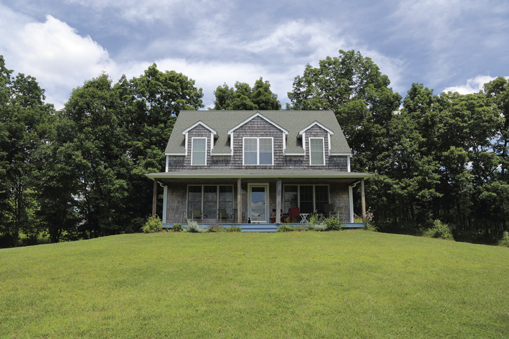ISO Emerging Issues Perspective
Your clients who participate in home sharing likely will need coverage enhancements
Although the concepts of sharing vacation rentals and carpooling—and their mutual benefits—go back many years, advancements in technology have turned these ordinary routines into a multi-billion-dollar sharing industry. In response to that growth, lawmakers and insurance companies have become aware of potential risks and exposures that can develop. Local governments, for example, have stepped in to regulate how residents can use their primary homes, with a focus on short-term rentals. Similarly, insurance carriers are working aggressively to address exposures that may be unique to the home-sharing industry.
Agents should review the owner’s homeowners policy to identify exposures and recommend appropriate coverages.
The stakes are high. In 2015, revenue generated by the sharing economy was estimated at $15 billion worldwide, according to a study by PwC. By 2025, that number is expected to jump to $335 billion. A large portion of this revenue is being generated by home-sharing platforms. Many of the major companies that facilitate this service have streamlined the process for renting out homes for vacationers around the world. Just a couple of years ago, one of the market leaders estimated the number of rentals available globally on its website at 1.8 million. Today the same company reports that number has increased to more than 3 million. A study by JPMorgan Chase showed that the popularity of home sharing in the United States has translated into substantial supplemental income for those who rent out their residences, with an average of about $314 of income per month for each host.
New legal scrutiny
The idea of supplementing income through home sharing can seem appealing to many, but home owners should do their research before deciding to list their place of residence on a website, in particular, for short-term rentals. With an increase in awareness of the extent of short-term rental activity by local and state governments, what was once an unregulated industry now is subject to some complex regulations at the local level. For example, residents of New York City should be aware of a law that was passed in 2016. Although tenants already were not legally able to rent out their whole apartments for less than 30 days, New York’s law imposes fines for simply advertising an apartment for a rental period of less than 30 days. Even so, this law affects only apartment dwellers in certain kinds of buildings and does not affect how unit owners or home owners can use their residences.
San Francisco’s recent legislation is much more detailed than New York’s law and affects all kinds of residences. The law, enacted in 2014, limits to 90 the number of days that a residence can be rented out in its entirety. If the owner is present, there is no limit. Short-term rentals are restricted to primary homes, and the owner must live in the home at least 275 days of the year. Residents are required to report the number of days the home is rented out annually, and also must obtain a permit to participate in home sharing. The permit costs $250 and requires renewal every two years.
Chicago also has intervened, with a home-sharing ordinance that was passed at the end of 2016. The ordinance, which some deemed controversial, initially contained a provision that allowed local officials to search homes and seize records related to home sharing—at any time and without a warrant. It was amended earlier this year, and that provision was removed because of residents’ concerns. Key provisions of the 58-page amended ordinance include: home-sharing hosts must keep records of all guests for up to three years; a special tax will be levied on home-sharing hosts; and a cap will be put in place for the number of rentals available in any particular building.
How to insure?
These are examples of the kinds of laws that have been passed in an effort to regulate home sharing more strictly. Agents should urge property owners to check local ordinances to make sure they comply with the law before they decide to list their residences on a home-sharing platform. Similarly, agents should review the owner’s homeowners policy to identify exposures and recommend appropriate coverages. Although many home-sharing platforms provide some kind of insurance or guarantee to protect both the host and the visitor, a certain peace of mind comes from knowing one is protected under one’s own policy.
Several insurers have introduced proprietary forms that address the home-sharing exposure. ISO has developed its own forms and has filed them in the majority of states. These forms are designed to reinforce that coverage for home sharing is not contemplated under the homeowners policy. These forms also give carriers the flexibility to extend coverage (for an additional premium) to insureds who chose to participate in home sharing.
As noted above, many home-sharing platforms provide their hosts a guarantee for property damage and may even extend liability coverage in the event of an injury or property damage loss. This coverage, however, can be extremely restrictive, and the time frame for reporting a loss can be as brief as a few days. Unfortunately, a home owner may not discover property damage until weeks or even months after it has occurred. By this time, the window to report a loss has already been closed. Coverage provided by ISO’s new endorsements (and some carrier endorsements) generally grant a home owner a longer window of time to find and report a loss. It is important for agents to ask their homeowners clients if they are participating in home sharing.
As advances in technology generate new exposures, it remains imperative that insurers develop the tools to meet the needs of their insureds. Home sharing is just one example of the newly created exposures that affect home owners worldwide.
The author
Kevin Poll is director of personal property and farm product development at ISO Solutions, a Verisk Analytics (Nasdaq:VRSK) business.






